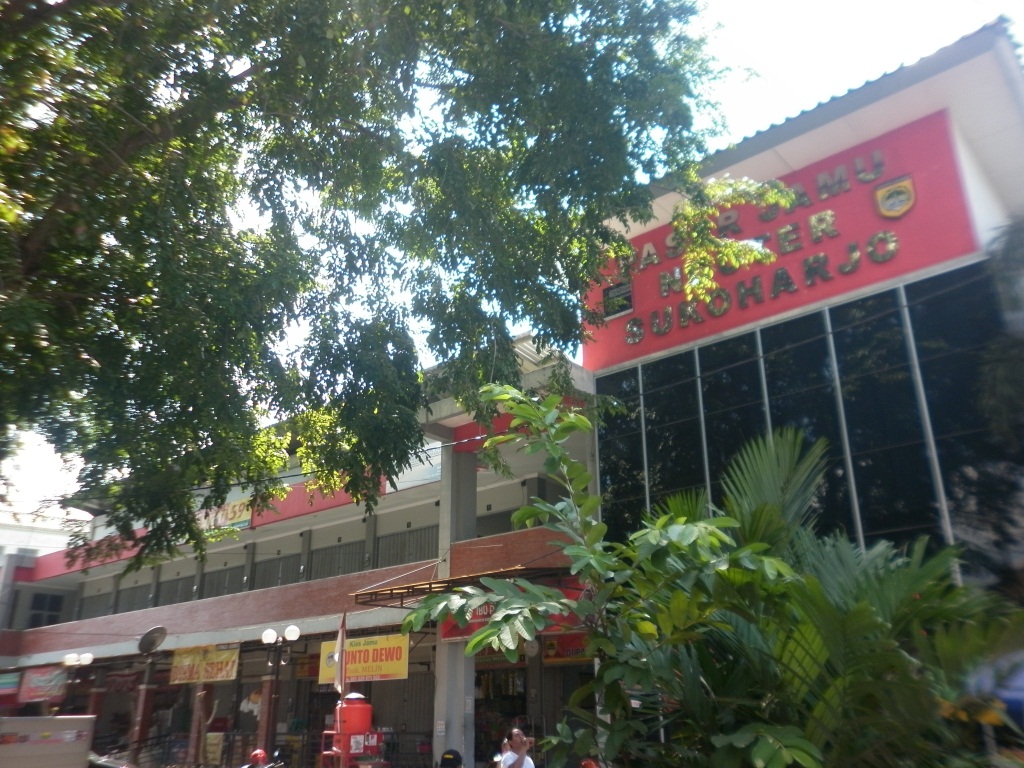Nguter Sukoharjo: A Hang-out Spot To Enjoy Jamu
Suwe ora jamu mas, jamu godong thela.
Suwe ora ketemu, temu pisan ora jamu!
Jamu sing pait wae isa nggawe mari, mosok kowe sing manis isa nggawe lara?
The bitter jamu (traditional medicine) can cure the sick, why are you who are so sweet just hurt me?
What is not jamu godhong thela (cassava leaves), since I have not found jamu cassava leaves yet. Have you ever drank jamu godhong thela? Too far, have you ever drank jamu? Still, there is no answer. Have you ever seen jamu? Do you know jamu?
Do we often see women wearing jarik cloths holding bamboo baskets filled with drink bottles walking from house to house in towns or villages? However, if we live in a very complex apartment may never find mbok jamu. Long before modern medicine was introduced, Indonesian people were already able to fight the disease by prescribing traditional medicine. However, we often drink sachet drinks called tolak angin and bejo bintang tujuh two sachets at once so we can be smart and lucky people. So, don't ever say you don't know about jamu.
Still connecting history, there is now a place in Jawa Tengah that becomes the center of jamu, although it is not right in the Mataram region where jamu originated, not far away, Klaten-Sukoharjo is still side by side.
The center of jamu is in Nguter Sukoharjo, in Semar Village (Esem Manis Anak Makmur) almost every citizen produces jamu. A few meters to the east we will meet the Nguter Jamu Market which sells various jamu products. Even thanks to its existence preserving the culture of drinking jamu as ancestral heritage, Sukoharjo was named as a Jamu Tourist Destination in 2019. Not long ago, the Covid-19 pandemic hit the world, including Indonesia. The agrarian culture of Indonesian people who like to maintain medicinal plants and have a live pharmacy again meets the bright spot. Herbal remedies including jamu increasingly complement public awareness of the importance of back to nature and began to be sought.
For the people of Java, jamu is also familiar with the name jampi, even jamu itself is sometimes extended to Jampi Usada. Separately, both have the meaning of a drug. But jampi here should not be equated with jampi-jampi, Jateng Gayeng buddy! Because the current jampi means magic or spells to enter the realm of use. Since the old impression contains a rather magical meaning, jamu is replaced with the term traditional medicine. By the way, if you want to do jampi to your ex to your crush, in the Nguter Jamu Market there is already a hang-out spot that is claimed to be the first jamu café in Indonesia. Here, we can find a café that does not serve coffee but herbal drink jejamon. Try enjoying a glass of saffron-colored rice or turmeric tamarind with loved ones, that's what is meant by jampi in the process of moving on.
There is no need to be ashamed to preserve jamu because it is a descending tradition and the legacy of ancestors that existed before the Majapahit Kingdom was established. Although there is no scientific evidence, Indonesian people prefer kerokan (scrapping) rather than drinking jamu to excess colds, now people re-glance at herbal herbs.
History says jamu had begun to be concocted before the Syailendra dynasty built Borobudur. The legacy of the ancestors of the Sanjaya dynasty in ancient Mataram that has been used as a healing medicine was originally formulated by royal health people around Mount Perahu, Mount Sumbing, Mount Merapi, Mount Sindoro, Mount Merbabu, Mount Lawu, and Sewu Mountains. Indeed, there is the location of the ancient Mataram earth that succeeded around 700 AD.
Does anyone disagree that this is jamu? Whatever meaning it is and how accurate it is not to be debated, what is clear is that jamu is traditional medicine as one of the treatment efforts that people use intending to be able to treat minor diseases, prevent the symptom of diseases, maintain health and endurance. At the very least we should recognize the following types of herbs:
- Kunir asem (turmeric tamarind) is made from turmeric and tamarind. Curcumin content in turmeric is believed to treat menstrual pain, thalassemia to Alzheimer's.
- Beras kencur (saffron-colored rice), as the name implies, is made from galanga or aromatic ginger extract and rice that is believed to relieve diarrhea and treat infections,
- Temulawak (Curcuma), is certainly made from the rhizome of Curcuma which has antioxidants to increase appetite and overcome indigestion and flatulence.
How to serve instant herbs is very easy, powdered herbs are simply poured into a cup or a glass, add boiled water approximately 200 ml, stir, and it is ready to serve. It is delicious when warm or cold plus ice. A cup of Temulawak side by side with Beras Kencur supported by Sabdo Palon SKH. Tasty, Healthy, Fresh, and Useful.
In addition to the above, of course, there are many more types of traditional medicine (jamu) that we can get. How? Want to forget your ex and start a new life with jamu? Nguter Sukoharjo is the place.


